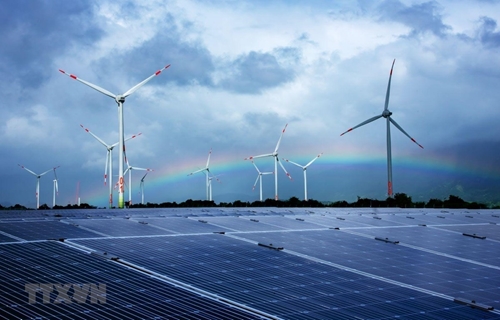Solar power development has gained positive results and investment, contributing to the effective exploitation of this power source, as well as electricity supply and energy security in Vietnam.
    |
 |
|
Issues related to Vietnam’s solar power development to be reviewed (Photo for illustration) |
The development of rooftop solar power, however, has been incompatible with power demand, especially last December, hampering the operations of the national grid.
Of note, power demand saw a decline due to the ongoing COVID-19 pandemic. Total produced and imported power capacity of the national grid stood at about 245.9 billion kWh, up around 2.7 percent against 2019 but down 15.6 billion kWh compared to the operation plan of the national electricity grid approved by the MoIT.
Since the start of 2021, EVN has rolled out measures to cut down solar power sources as well as other renewable energy sources in the national grid.
To ensure the development of solar power in line with the regulations and in an efficient manner, relevant agencies have been asked to study and address problems in solar power development over the recent past, particularly rooftop solar power as well as bolster inspections in the field to promptly detect and handle violation cases.
They are also tasked with mapping out effective management measures for renewable energy sources, especially solar power in the coming time, in a bid to minimise the reduction of installed renewable energy sources and economic losses of investors.
Leaders of localities nationwide are also ordered to observe regulations on rooftop solar and ground-mount solar power systems, and avoid unregulated installation of power sources which may cause overloading.
EVN’s statistics showed that as of the end of 2020, total power capacity in the national grid, excluding that of rooftop solar power, had surpassed 62,000 MW.
Capacity of solar panels installed on the ground hit 8,838 MW, while that of rooftop solar power joining the national grid about 8,000 MW.
Source: VNA